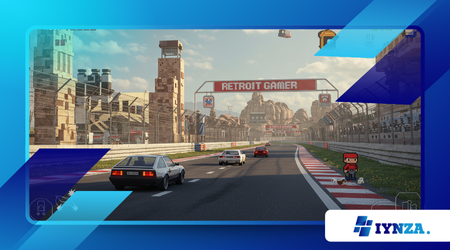How Retro Gaming Influences Modern Game Design

The pixelated landscapes of the past might seem primitive compared to today’s ultra-detailed environments, but retro gaming influences modern game design more than most players realize.
Anúncios
From mechanics and level design to aesthetics and storytelling, many elements rooted in classic games continue to shape how developers build new titles.
In this article, we explore how the old-school era still echoes in the games we play today. You’ll discover the lessons modern developers draw from 8-bit platforms, the revival of retro art styles, and why simple gameplay can still lead to deeply engaging experiences.
If you’ve ever wondered why certain modern games “feel” nostalgic—this is why.
The Foundation: Simplicity with Purpose
Many early video games were born out of technological limitation. With restricted memory, color palettes, and inputs, developers had no choice but to keep things simple. But simplicity didn’t mean lack of depth.
Titles like Tetris, Super Mario Bros., and Pac-Man mastered the art of minimalism—easy to learn, hard to master. These core principles still drive some of today’s most successful indie games.
Modern developers look back to those constraints as creative sparks. Stripping a game to its most essential mechanics can often lead to the most compelling experiences. Players aren’t overwhelmed by systems—they’re immersed in flow.
Mechanics That Still Matter
Retro gaming wasn’t just about charm. It was about rhythm, skill, and rules that were clear but challenging. Many of today’s mechanics—whether it’s double jumping, hitboxes, or timing-based attacks—trace their origins to early titles.
Think about the stamina bar in Dark Souls, the roll-dodge in Hades, or the bounce mechanics in Celeste. All are modern refinements of foundational elements seen in earlier titles.
The NES game Mega Man emphasized trial-and-error platforming with precise timing. Today, games like Cuphead inherit that DNA, rewarding pattern recognition and persistence.
Read also: Why Indie Games Are the Heart of the Gaming Industry
Level Design That Teaches Without Words
Early game levels didn’t use tutorials. They were the tutorials. Players learned by doing—by failing and adjusting.
Modern games like Super Meat Boy and Hollow Knight continue this tradition, using smart environmental cues instead of explicit directions. Platforms are placed to invite experimentation. Hazards punish but teach.
A 2023 Game Developers Association survey found that 62% of level designers cited classic platformers as their primary inspiration for learning-based level flow.
Retro games laid the groundwork for how spaces can guide player behavior, building trust and momentum through intuitive challenge.
The Revival of Pixel Art and Chiptunes
Visual nostalgia is more than a trend—it’s a design choice. Pixel art, with its bold colors and simplified forms, invites imagination. It’s not about realism. It’s about style.
Games like Stardew Valley, Undertale, and Hyper Light Drifter use retro visuals to evoke emotion and establish identity.
Soundtracks, too, borrow from the chiptune roots of 8- and 16-bit consoles. The synthetic tones of yesteryear now serve as a deliberate artistic signal—a link to gaming’s past and a stylistic fingerprint of indie innovation.
The game Shovel Knight is designed to feel like a lost NES classic—but with polish, complexity, and storytelling techniques that are unmistakably modern.
One Analogy to Remember
Retro game design is like vintage architecture. It may not have smart lighting or modern plumbing, but it has soul, structure, and character that today’s builders still study.
Modern developers walk through those old “buildings” to learn why they still stand.
A Statistic That Tells the Story
According to Steam Analytics 2024, pixel-art and retro-inspired titles accounted for over 32% of indie game sales worldwide, showing not only demand—but cultural staying power.
Players return to these games not because they’re old, but because they’re timeless.
A Question to Reflect On
If the tech keeps advancing, but the most engaging moments still come from simple design—what does that say about what truly makes a great game?
The Philosophy Behind the Fun
Retro games didn’t rely on realism to captivate. They relied on creativity. Limited resolution meant developers had to design characters and worlds that resonated without visual excess.
Today, with nearly unlimited computing power, the challenge isn’t building bigger—it’s building better. And “better” often means smarter. Retro design teaches restraint, intention, and trust in the player’s ability to explore and understand.
This philosophy also lives on in game loops. Many successful titles in 2025 feature quick restarts, high stakes, and rewarding difficulty—all rooted in the arcade tradition of “one more try.”
Emulation, Preservation, and Legacy
Another impact of retro gaming lies in the culture of preservation. Emulation and rereleases keep older titles alive—and not just as novelties.
Developers revisit them to study enemy patterns, pacing, and user experience. Modders and remasters bring these games into new engines while maintaining their original soul.
Communities around retro titles also influence design through feedback, speedrunning culture, and documentation, pushing developers to reconsider how design serves both fun and mastery.
Accessibility Lessons from the Past
Retro games were often difficult, but they were consistent. Inputs responded instantly. Feedback was immediate. This purity of interaction made them more accessible in surprising ways.
Modern games that apply these lessons—like minimizing input delay or offering clear visual feedback—often feel better to play, especially on less powerful hardware or for players with different abilities.
Retro gaming’s simplicity ironically helps today’s games reach more people.
Looking Ahead: Why the Past Still Guides the Future
Retro gaming isn’t just a memory—it’s a toolkit. Today’s best developers aren’t nostalgic for nostalgia’s sake. They’re students of elegance.
When a game like Celeste wins awards for gameplay and emotional storytelling, it proves that you don’t need 4K textures or ray tracing to move someone. You need truth in your mechanics. You need clarity in your challenge.
Games don’t always need to be big to be bold. Sometimes, all they need is heart—and that’s something the retro era delivered in spades.
FAQ
1. Why are retro games still popular?
Because their mechanics, art style, and simplicity still resonate with players seeking pure, focused gameplay.
2. Do modern developers really study old games?
Yes. Many cite classic titles as core influences when learning design fundamentals.
3. How does retro gaming influence indie development?
Indie devs often emulate old styles to reduce costs while embracing effective, timeless mechanics.
4. Is retro gaming only about nostalgia?
Not at all. It’s also about design clarity, accessibility, and player-centric experiences.
5. What are examples of modern games influenced by retro design?
Shovel Knight, Stardew Valley, Celeste, and The Messenger are just a few.
6. Are retro mechanics harder than modern ones?
They can be more punishing, but also more consistent and rewarding.
7. Why do modern games use pixel art?
It’s an artistic choice that emphasizes style and invites imagination.
8. Is retro sound design still used?
Yes. Chiptune and lo-fi sounds remain popular for atmosphere and identity.
9. How do retro games affect mobile gaming?
Simple mechanics and fast loops from retro games translate well to mobile platforms.
10. What’s the biggest lesson from retro gaming for designers?
To trust players. To teach through doing. And to create depth from limitation.
